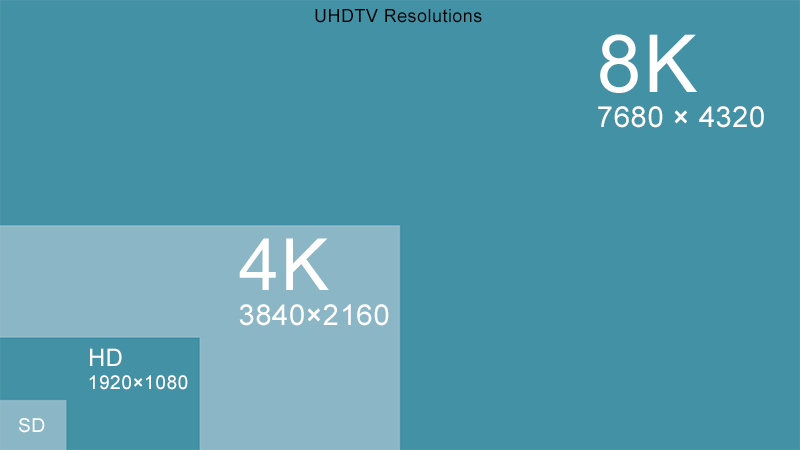Video Resolution
In digital video, resolution means the number of pixels displayed on screen. Technically speaking there are two types of resolution:
- Spatial resolution means the width and height of the displayed image, measured in pixels. In other words, the total number of pixels contained in each individual frame.
- Temporal resolution means the frame rate (number of frames shown per second), i.e. "resolution over time".
Unless otherwise stated, it's safe to assume that the term resolution by itself means spatial resolution.
Common resolutions
There are many different resolutions available for for video, television and cinemas—the table below shows some of them.
| Name | Pixels (width x height) | Aspect Ratio | Notes |
|---|---|---|---|
| Standard Definition (SD) | |||
| 480p / 480i | 720×480 (or 704×480) | 4:3 (approx) | NTSC |
| 576p / 576i | 720×576 (or 704×576) | 4:3 (approx) | PAL |
| High Definition (HDTV) | |||
| 720p | 1280×720 | 16:9 | |
| 1080p / 1080i | 1920×1080 | 16:9 | |
| Ultra High Definition (UHDTV) | |||
| 4K (2160p) | 3840×2160 | 16:9 | Exactly 4 × 1080p |
| 8K (4320p) | 7680×4320 | 16:9 | Exactly 16 × 1080p |
| 8640p | 15360×8640 | 16:9 | Exactly 32 × 1080p |
| Digital Cinema (DCI) | |||
| 2K | 2048 × 1080 | 1.90:1 | The first generation of digital cinema projectors. |
| 4K | 4096 × 2160 | 1.90:1 | 2nd generation digital cinema. |
Notes
- "i" refers to a TV standard that uses interlaced frames. "p" means progressive frames.
- In some older systems, some pixels are reserved for technical display information and are not part of the visible image.
- Digital cinema formats have variations for archiving and other purposes.
The image below shows some of these resolutions in relation to each other. Remember that higher resolution doesn't necessarily mean a "bigger picture", it just means more pixels in the displayed image—whatever size that happens to be. Of course higher resolutions are generally suited to larger displays.
